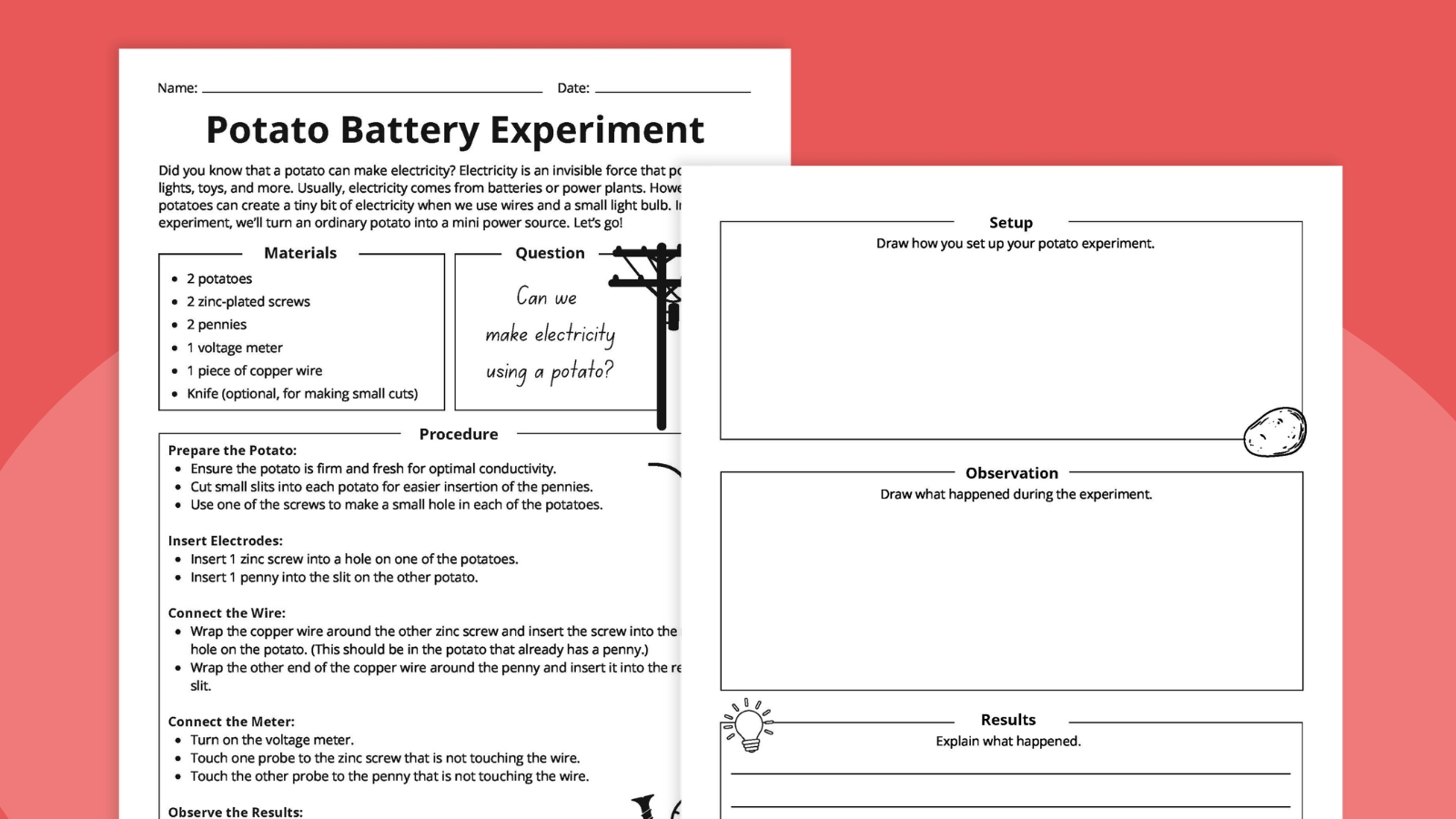This Potato Battery Experiment is a fun way to engage your classroom. It feels almost like a magic trick—especially if you keep the science behind it a surprise at first! Read on to see how to conduct the experiment, and fill out the form on this page to grab your free recording sheet.
How does the Potato Battery Experiment work?
We’ve all heard of plugging electrodes and wires into a potato and generating electricity. But how does this magic trick actually hold up scientifically? It turns out the potato doesn’t generate electricity on its own. The electricity comes from the chemical reactions that take place at the metal electrodes in the acidic environment of the potato. The potato acts as a medium for the reaction, enabling the flow of electrons, which is the essence of electric current.
What does the Potato Battery Experiment teach?
The Potato Battery Experiment teaches several key principles about electricity, chemistry, and energy conversion in a fun format. It can also spark a conversation about renewable energy sources.
Is there a Potato Battery Experiment video?
Materials Needed
To do the Potato Battery Experiment, you will need:
- 2 potatoes
- 2 zinc-plated screws
- 2 pennies
- 1 voltage meter
- 1 piece of copper wire
- Knife (optional, for making small cuts)
Our free recording sheet is also helpful—fill out the form on this page to get it.
Potato Battery Experiment steps:
1. Prepare the potato.
Cut small slits into each potato for easy insertion of the pennies. Use one of the screws to make a small hole in each of the potatoes. Ensure the potato is firm and fresh for optimal conductivity.
2. Insert electrodes.
Insert a zinc screw into a hole in one of the potatoes. Then insert a penny into the slit on the other potato.
3. Connect the wire.
Wrap the copper wire around the other zinc screw and insert the screw into the remaining hole on the potato. (This should be in the potato that already has a penny.) Wrap the other end of the copper wire around the penny in a V shape and insert it into the remaining slit.
4. Connect the meter.
Turn on the voltage meter. Touch one probe to the zinc screw that is not touching the wire. Touch the other probe to the penny that is not touching the wire.
5. Observe the results.
The voltage meter should show a positive voltage reading. If it doesn’t, ensure all connections are secure and the probes are touching the screw and penny.
Additional Helpful Notes
- Multiple potatoes can be connected in series (linking zinc of one to copper of another) to increase voltage.
- The potato acts as an electrolyte, allowing the flow of electrons between the electrodes.
Get my worksheet bundle!

Ready to conduct this experiment yourself? Grab our printable potato battery experiment worksheet bundle by clicking the button below.















